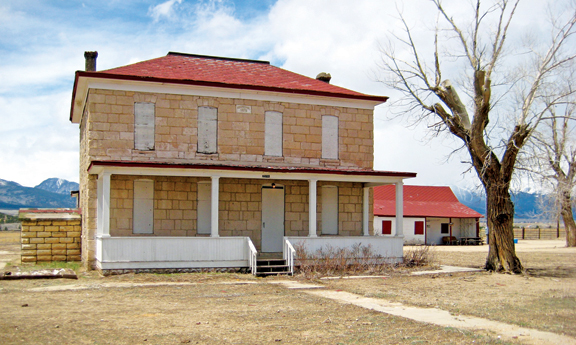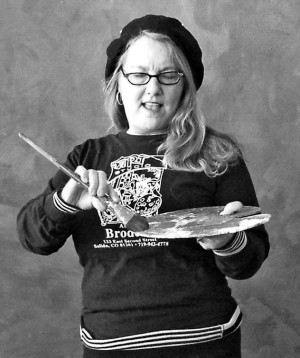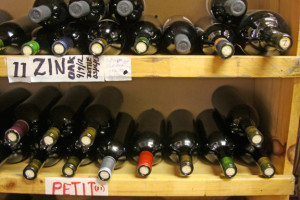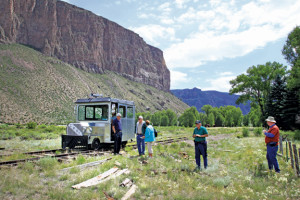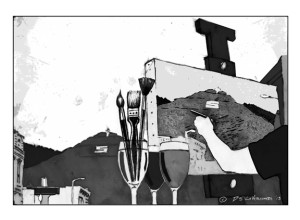By Fay Golson for The Chaffee County Heritage Area Advisory Board
Driving along the Collegiate Peaks Scenic and Historic Byway (Salida to Poncha Springs and Buena Vista to Granite), buildings and structures come into view that have many stories to tell. Some of these buildings and structures are not visible from the Byway but instead are nestled within the towns.
In 2010, on behalf of the Chaffee County Heritage Area Advisory Board (CCHAAB), the Greater Arkansas River Nature Association (GARNA) received a Colorado State Historic Fund Grant (SHF) to have 65 properties in Chaffee County included in a Historic Resources Survey. GARNA selected Tom and Laurie Simmons of Front Range Research Associates (FRRA) to perform this work. After two years of work by volunteers, Colorado Mountain College students, the CCHAAB and the FRRA, the project is now complete. Documents will soon be available to the public at the Salida Regional Library and the Buena Vista Public Library.
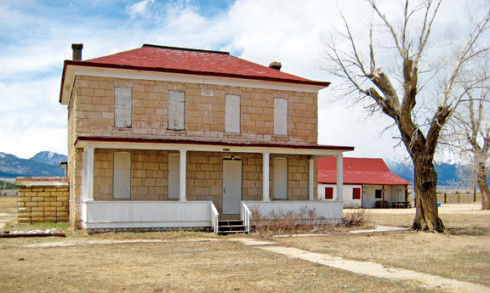
The resources selected were intentionally varied to include properties related to ranching, tourism and recreation, education, mining, transportation, cemeteries and town building. The first step was to locate the properties which showed promise. This was accomplished by a reconnaissance survey team of volunteers who viewed the properties from the public right-of-way, making note of more than 1,000 potential survey candidates which, at first glance, appeared to be older than 40 years. With assistance from students in the Historic Preservation Program at Colorado Mountain College, the noted candidate list was analyzed and narrowed to about 150. The FRRA and the CCHAAB selected 65 of the candidates to be included in the survey. GARNA reviewed the list, and the final selections were approved by the State Historical Fund office in 2011.
The next step in the process was to obtain property owner approval to include their property in the survey and allow the FRRA team access to perform necessary fieldwork. Most owners were delighted but a few declined, so additional properties were identified as replacements. It took about a year to complete the approval process, after which the FRRA went into action and the field work began.
The work included determination of architectural features, style, building materials, building conditions and plan, as well as in-depth historical research. Photographs and field sketch maps of the building footprint and building location, including landscape features, were noted for each property. The Architectural Inventory Form required by the SHF was compiled, which consolidated all the information regarding the property in a professional and concise manner. These are the forms and corresponding photographs that will be available at the libraries. The SHF gave final approval of the survey in April of this year.
In the coming year, one of the 65 properties from the Historic Resource Survey will be spotlighted in each issue of Colorado Central Magazine. The first featured property is the Weston Ranch, Centennial House, located southeast of Buena Vista and owned by the State of Colorado Department of Corrections.
The house, built in 1876, and outbuildings and corral, added at a later date, were originally a farm owned by pioneer Philo M. Weston. The History of the State of Colorado by Frank Hall praises Weston, noting him as “one of the earliest pioneers to Colorado” who “courageously endured all the hardships and privations incident to life at that period on the extreme frontier of civilization.”
Weston was born in New York in 1824 and worked on his father’s farm until he was 22. After learning the masonry trade, he moved around the midwest. He married Mary Jane Adams Binkley from Nebraska in 1858. The Weston family, traveling by oxcart, arrived in Colorado in 1860 and settled in Denver. Philo found employment as a plasterer. They moved farther west and took up residence on a farm on the east end of a mountain pass near Leadville. That pass, Weston Pass, now carries his name. An interesting note is that he became the toll collector for the pass and supplied food and lodging for the travelers. The Westons moved on to Twin Lakes and then Granite, where Philo mined while Mary ran a boarding house. In the 1870s the hard work paid off. The Weston family, which now included four children, was able to purchase land where the Weston Centennial House now sits. The house was built in 1876 and was noted in History of the Arkansas Valley, Colorado as “an elegant stone house” with “all the comforts of an Eastern home.” Weston named the house Centennial (misspelled on the name block as Centenial) to celebrate the nation’s hundredth anniversary. In 1891, the farm covered 160 acres, 150 of which were cultivated in grain, vegetables, potatoes and hay. There were eight miles of ditches, six horses, 25 head of cattle and 150 hogs.
The Weston family continued to farm and ranch this land until his death in 1894. Mary then moved to Buena Vista, where she lived until her death in 1905. The farm passed through several owners before being acquired by the State of Colorado in 1926. The Colorado State Reformatory used the farm as part of a dairy where inmates, who had earned the privilege, served as the work force. Operated until the early 2000s as a dairy, the property, still owned by the state, is now used for agricultural purposes.
The late Victorian Italianate two-story stone house sits on a stone foundation. The stone on the facade is a tooled, light buff-colored material categorized as volcanic tuff, while the side and back exterior walls are quarried gray stone. Although not documented, it is possible that Weston, with his knowledge of masonry, constructed the walls. Quoins (cornerstones) finish off the front wall where it intersects the side walls. A hip roof tops the building.
Centennial House is located at 25701 County Road 301, near Buena Vista. It can be easily viewed from the road, but the buildings and surrounding property are access-restricted. The house stands in commemoration of a pioneer who ventured here with the goal of farming and ranching the upper Arkansas Valley, not an easy task. This family and many resolute others are an integral part of the early foundation of Chaffee County as well as the Centennial State.

